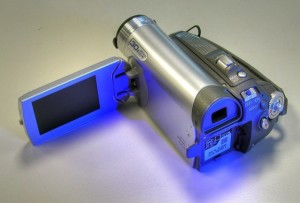Report your claim promptly to your insurance company
Contact your insurance company as soon as possible after a disaster strikes. Provide as much detail as you can about the damage to your property. Be sure to provide your insurance company your phone numbers where you can be reached, especially if your home is uninhabitable.
Hire General Public Adjusters as your Public Adjuster
It is wise to have someone, such as a Public Adjuster, represent your rights and look out for your best interests while the insurance company adjuster represents the interests of your insurance company. General Public Adjusters will help review your insurance policy so you know what is and is not covered in your loss.
Get a copy of your current insurance policy
If your insurance policy has been lost or destroyed in the disaster, ask your insurance company for a certified copy of the policy.
The insurance policy is hard to understand for the average person and you may have to learn new terminology. The Declarations section of your insurance policy gives the broadest overview of the policy including your name and address, policy number, dollar amounts and limits of coverage, and endorsements. Basic contents limits are generally set by the insurance company as a percentage of your dwelling coverage limits.
Check your limits for schedules or itemized personal property items (such as jewelry, artwork, or other valuables). Many homeowners who experience a total loss are underinsured, meaning they do not have sufficient limits to put them back to their pre-loss condition.
Take pictures and videos of the damages before making any changes


Before you begin cleaning or making repairs and after you have determined that it is safe for you to enter the damaged site, you need to take pictures and/or videos of the damage and all affected areas of your property so you have a record of the conditions and damages that can be used later if there are any disputes with your insurance company. It is better to have too many pictures than not enough. Take pictures from multiple angles so you have a good reference of where each picture was taken.
Temporary Repairs
It is your responsibility to protect your property from further damage. Protect your property from further damage as soon as possible by making temporary repairs such as covering holes in walls or roofs with tarps or patching holes in walls or roofs and boarding up windows.
- Remember you should already have taken photos of the damage. If not, do so first before making repairs.
- Contact utility providers such as water, gas, and electric to have utilities discontinued, if necessary.
- Keep all bills and receipts from repairs.
- Do NOT dispose of items you believe may be a complete loss until the insurance company representative has examined them.
- Board up windows and holes in the walls or roof.
- Keep a portion of the damaged items (such as roof tile, floor board, etc.) for later testing or inspection
- Cover furnishings with heavy-duty plastic or tarps, or store elsewhere.
- Be sure to get prior agreement from your insurance adjuster before you contract for repairs.
- If there is a lot of water in your home, try to get it out and ventilate your property to assist in drying.
- Clean and dry furniture, bedding, rugs, and carpet as soon as possible.
- Try to prevent metal objects (appliances, drapery rods, etc.) from rusting by drying and rubbing or spraying with oil.
- Have electrical equipment checked by a professional before using.
- Take small valuables such as jewelry, silverware, etc. to a safe place.
Start Making a List of Damaged Personal Property
It is your responsibility to file a Proof of Loss form which is essentially your statement (signed and sworn by you) of the amount you are claiming under your insurance policy.
The Proof of Loss claim form lists all your losses including personal belongings that are damaged or destroyed. General Public Adjusters can assist you with detailed lists of common personal belongings to help you remember what items may have been destroyed in a fire, for example. It is important that you do not misrepresent any part of your inventory in your Proof of Loss or your whole claim can be denied. Your insurance policy is meant to indemnify you, which means make you whole, but no better or no worse than before your loss.
This Proof of Loss part of the process is very important. It is the contractual obligation of the policyholder and not the insurance company’s adjuster to be responsible for filling out this critical document which includes the entire dollar amount of the claim. Any mistakes in this document can cause your claim to be delayed, denied or investigated.
The Proof of Loss form for major damage is where the policyholder immediately gets in over their head. The Proof of Loss form is the linchpin for all future interaction with the insurance company. For example, most policy owners know how to cook a meal, but would be in over their heads cooking for 100 guests at a wedding party. Most policyholders would obtain wise counsel from an attorney to represent themselves in an important court case. In most states you cannot get legal representation in small claims court and you have to handle the case yourself, but it would not be wise to represent yourself in superior court for a case involving $50,000. It is better to be safe than sorry. Read more details about the Proof of Loss process at this link.
Find Areas of Agreement
Your insurance company may have multiple adjusters involved throughout the claim process to handle various categories of losses. Try to reach agreements on as many issues as you can with the insurance company adjusters to speed up the process. Then make sure the agreement is followed up in writing to document what was agreed upon. Keep all the correspondence (letters and emails) and any of your notes about meetings and telephone calls concerning the positions and agreements discussed.
Salvage Rights
Do not dispose of any damaged items without your insurance company representative’s approval. Typically your insurance company has the salvage rights to items damaged under covered losses, but you may be able to negotiate the right of salvage. Items that cannot be restored to their pre-loss value may still have significant value. Make sure that any agreements that are made with regard to salvage rights you retain are put in writing and kept with your documentation files of your claim, otherwise the insurance company could offset (reduce) your claim.
